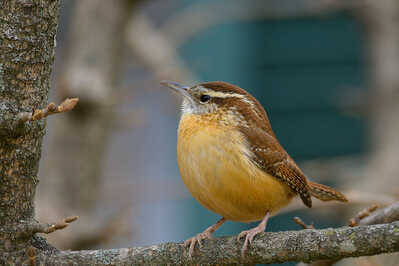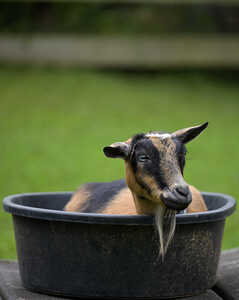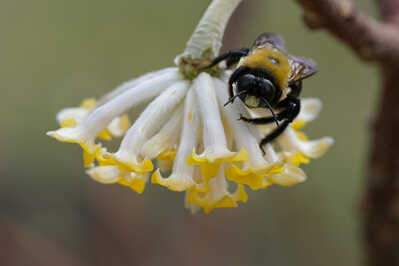Trying to photograph fauna (insects too!) in a thoughtful way, whether in isolation or in their environment, wild or domestic/Zoo, without showing abuse or death. C&C are welcome!
I don't have the patience (nor the proper equipment) for birding, but I took advantage of a few chance encounters to photograph birds. My longest reach was with the Nikon 1 70-300mm lens, a true gem in the Nikkor 1 lineup. I parted ways with it a couple of months ago in an attempt to simplify/consolidate my photo equipment. It will be missed...
Nikon 1 J5, 1 Nikkor VR 70-300mm f/4.5-5.6 @ 300mm (810mm equiv.), 1/200 sec, f/5.6, ISO 400 (Green Spring Gardens, Alexandria, Virginia, December 2021)
Although I wasn't a fan of small sensors,J5 was an interesting camera with a speed 1/16000, sensitivity around 10000 or 12000ASA if I remember correctly, and many fps.If I'm not mistaken,Nikon CX sensor was the answer of Nikon for MFT sensor.It seemed to be for fast movement subjects.Of course that is an opinion about something that was many years ago.Thank You.
@radudinu Thank you for your comment, Radu.
The J5 was the last Nikon 1 camera, and just as you wrote, it had a number of interesting features and capabilities, including a very nice 20MP BSI sensor. Its main disadvantage: no viewfinder. I will finally part ways with mine in a few weeks.
I got into the Nikon 1 system after sampling m43 (Olympus EPL-1 & Panny 100-300mm). The Nikon 1 70-300mm was better and had more reach.
24-70 mm @ 200 mm ?
I only "discovered" the Huntley Meadows Park in late 2020. I was told previously of this great "local" place for bird photography (herons in particular) but never found the time to visit. The pandemic significantly reduced traffic in the area, and my quest to find open parks for walking/hiking finally brought me to Huntley Meadows in the Fall of 2020. I've visited the park many times since then, and it has never dissapointed - there was always at least one heron to photograph, even if the water was frozen solid.
But the only time I saw a Great Egret in the park was on one of my first visits there, and it was so close to the boardwalk that 165mm was enought to capture an environmental portrait. The bright horizontal light of a late November afternoon almost darkened the background. Almost :-)
Nikon Z50, Nikkor Z 70-200mm f/2.8 S @ 110mm (165mm equiv.), 1/1600 sec, f/5.6, ISO 100 (Huntley Meadows Park, Alexandria, Virginia, November 2020)
I like it but..... I wouldn't darkend so much the background. I edited, yours, with "Curves" to see what was in the background and I like what I saw.Do not be upset.Thank You.I only "discovered" the Huntley Meadows Park in late 2020. I was told previously of this great "local" place for bird photography (herons in particular) but never found the time to visit. The pandemic significantly reduced traffic in the area, and my quest to find open parks for walking/hiking finally brought me to Huntley Meadows in the Fall of 2020. I've visited the park many times since then, and it has never dissapointed - there was always at least one heron to photograph, even if the water was frozen solid.
But the only time I saw a Great Egret in the park was on one of my first visits there, and it was so close to the boardwalk that 165mm was enought to capture an environmental portrait. The bright horizontal light of a late November afternoon almost darkened the background. Almost :-)
Nikon Z50, Nikkor Z 70-200mm f/2.8 S @ 110mm (165mm equiv.), 1/1600 sec, f/5.6, ISO 100 (Huntley Meadows Park, Alexandria, Virginia, November 2020)
I like it but..... I wouldn't darkend so much the background. I edited, yours, with "Curves" to see what was in the background and I like what I saw.Do not be upset.Thank You.
Hello Radu,
Don't worry about it, I have no problem with people trying different things on my photos.
I did not darken the background of the photo in post - it was the camera that reacted to the bright light shining on the white egret by increasing the shutter speed, which resulted in the dark background. I actually had to brighten the area under the right wing of the egret in post, to bring back some of the details.
In my opinion this kind of photos asks high ISO (4000-8000) and M shooting mode.(For exemple, with DxO PureRaw noise is not a problem.)I am glad You weren't upset.I like it but..... I wouldn't darkend so much the background. I edited, yours, with "Curves" to see what was in the background and I like what I saw.Do not be upset.Thank You.Hello Radu,
Don't worry about it, I have no problem with people trying different things on my photos.
I did not darken the background of the photo in post - it was the camera that reacted to the bright light shining on the white egret by increasing the shutter speed, which resulted in the dark background. I actually had to brighten the area under the right wing of the egret in post, to bring back some of the details.
Thank You.
In my opinion this kind of photos asks high ISO (4000-8000) and M shooting mode.(For exemple, with DxO PureRaw noise is not a problem.)I am glad You weren't upset.
Thank You.
Thank you for your feedback, Radu!




